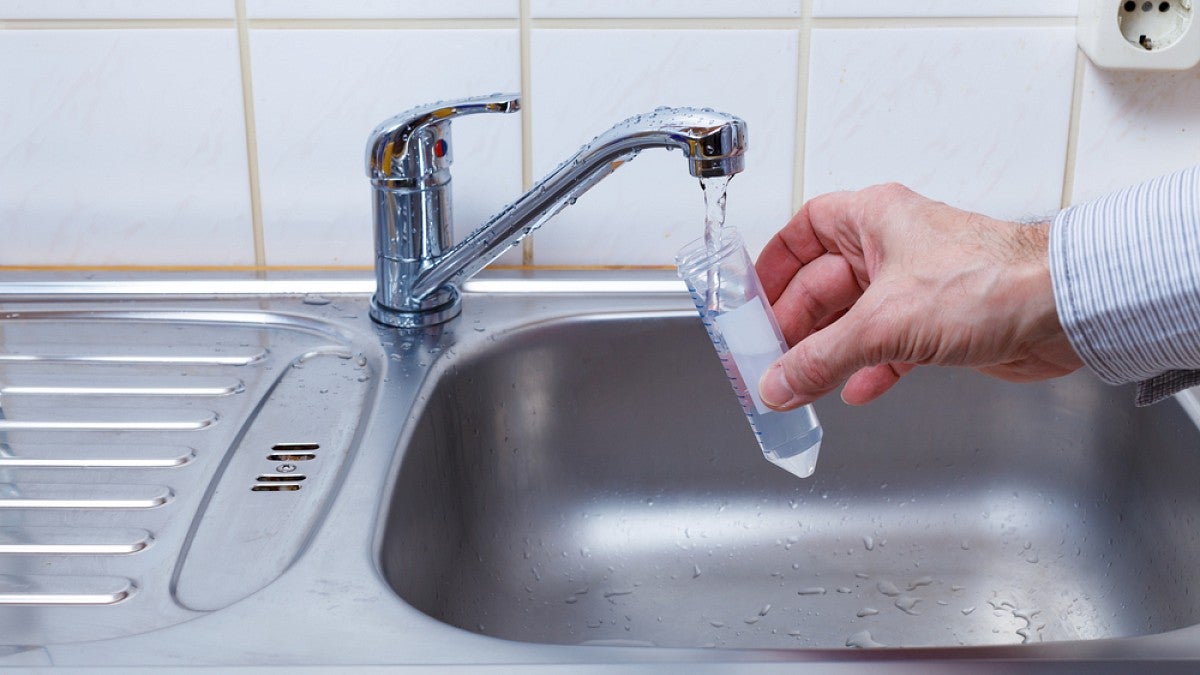The UO has completed water tests in about two-thirds of campus buildings, and fewer than 8 percent have shown evidence of elevated levels of lead in drinking water as the monitoring program continues.
Since the start of the university’s drinking water monitoring program in late spring, Safety and Risk Services staff have taken some 1,670 water samples from drinking water fixtures.
Staff have tested 80 campus buildings, with another 40 or so buildings left to test in the remainder of the 2016-17 academic year. More than 92 percent have shown favorable results, with lead levels below federal guidelines.
Most of the remainder have been solved with fixture cleaning, repair or replacement, and only a few fixtures remain out of service. After testing starts, no drinking water fixture is returned to use until it meets standards as indicated in the University’s Drinking Water Monitoring Plan.
The U.S. Environmental Protection Agency sets 15 parts per billion as the limit for lead in public water systems. The UO is using 15 ppb as an "action level" to trigger additional tests to determine whether the lead is coming from faucets or from the water lines themselves.
Water that tests normal after flushing the line for 30 seconds shows that the problem likely is with a fixture, and most of the tests at the UO fall into that category. Those fixtures are being cleaned, repaired or replaced to produce a level below 20 ppb, which is the guideline set by the EPA for schools and child care facilities.
Of the less than 8 percent of buildings where a test has showed elevated lead levels, a notable portion came from samples from the Barnhart, Walton, Hamilton and Bean residence halls just before fall move-in. Residents were provided alternative drinking and cooking water and told not to use fixtures while University Housing cleaned and repaired faucets to get levels within EPA guidelines.
Residents were notified between Sept. 28 and Oct. 11 that they could use their hall faucets for drinking and cooking water. Mitigation of drinking fountains that produced elevated initial results is continuing.
Safety and Risk Services has created a webpage for people to learn more about the program and see constant updates of testing: https://safety.uoregon.edu/drinking-water-monitoring
Testing and corrective action isn’t required for the UO. But like many public agencies with lots of buildings, the UO has been voluntarily testing for lead as part of a water quality monitoring program launched in late spring.
The university is testing all fixtures dedicated to drinking water in residence halls, such as drinking fountains, break-room sinks, bottle-filling stations, instant-hot fixtures or food-prep sinks. For water fixtures not dedicated to drinking water in residence halls, like bathroom faucets, the UO is sampling about 10 percent of each fixture type on each floor. Utility fixtures, lab sinks or other fixtures that are clearly not for drinking water are not tested.
Lead in water is a concern because high lead levels can contribute to negative health effects especially for pregnant women, infants and children under 6 years old. People concerned about lead exposure should contact their healthcare providers. For more information about lead, read www.epa.gov/lead/learn-about-lead.


